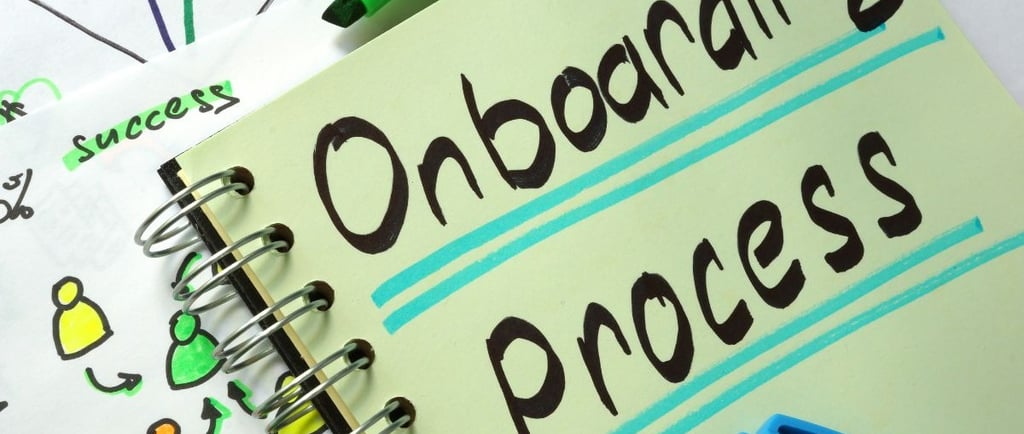Onboarding in 2025: Engage, Inspire, Retain
Discover the pillars of modern onboarding and how to design programs that build culture, connection, and long-term success.
WORKFORCE DEVELOPMENT
LearningStance
6/23/20253 min read


First impressions in business are everything, and onboarding in 2025 is your company’s most powerful opportunity to make a lasting one. No longer a passive checklist of tasks, onboarding has evolved into a strategic experience that sets the tone for an employee’s journey. It defines how they connect with your culture, contribute to their role, and envision a future with your organization.
Done right, onboarding helps new hires feel welcomed, equipped, and inspired. It signals to them—you are not just here to do a job—but to grow, thrive, and make an impact. In a world of rising employee expectations and remote-first realities, businesses must elevate onboarding from an HR function to a culture-shaping moment.
Why A Good Onboarding Matters in 2025
The data tells a compelling story:
69% of employees are more likely to stay with a company for three years if they experience great onboarding
Companies with structured onboarding see up to 50% greater productivity in new hires
Poor onboarding accounts for nearly 20% of early employee turnover
Effective onboarding reduces time-to-productivity by over 60%
With talent mobility high and employee expectations even higher, onboarding in 2025 is no longer optional— it’s a crucial differentiator for retaining and engaging talent.
The Pillars of Inspiring Onboarding
Successful onboarding in 2025 is built on five key pillars. These elements help businesses foster engagement, accelerate integration, and reduce attrition:
Purpose and Belonging
People want to understand why they have joined your company, not just what they’re supposed to do. Onboarding should begin with purpose — connecting new hires to your mission, values, and the real-world impact of their work. Sharing customer stories, employee testimonials, and community impact initiatives helps new joiners feel a sense of pride and belonging right from day one.Clarity and Confidence
Uncertainty is the enemy of early success. A clear roadmap including responsibilities, performance expectations, and key milestones gives employees direction and confidence. First-week goals, 30-60-90-day plans, and regular check-ins establish structure and reduce ambiguity.People and Culture
Connection drives commitment. Whether remote, hybrid, or on-site, onboarding should prioritize human connection. Introduce team members early, assign onboarding buddies or mentors, and invite new hires to participate in informal meetups and team rituals. When people feel seen and included, engagement naturally follows.Tools and Support
The best onboarding programs eliminate friction. Ensure seamless access to systems, credentials, communication tools, and learning resources. Integrating an LMS (Learning Management System) with guided content and automated task management can streamline the experience and reduce overwhelm. Technology should support learning, not complicate it.Momentum and Growth
Even during onboarding, employees are asking: Where can I grow? Provide opportunities for skill development through role-specific learning paths, microlearning videos, and certifications. Gamified modules, progress tracking, and early wins can foster motivation and make new hires feel capable and energized.
What Inspiring Onboarding Looks Like in Action
Picture this: a new hire opens their laptop on Day One to find a personalized welcome portal featuring:
A short video from the CEO and their direct manager
A 90-day success roadmap tailored to their role
Role-specific learning modules and checklists
An interactive team org chart with contact intros
A library of helpful resources, policies, and support channels
Over the next few weeks, they receive nudges for important milestones, attend virtual team coffee chats, and receive regular feedback from their onboarding buddy. Their progress is recognized, and they feel part of a living, breathing culture — not just a headcount.
How to Build Better Onboarding in 2025
To truly inspire and retain top talent, consider the following strategies:
Design for hybrid realities: Make your onboarding mobile-friendly, accessible, and asynchronous. Virtual welcome kits, video intros, and interactive LMS modules go a long way.
Leverage personalization: Use preboarding surveys to tailor onboarding to individual roles, experience levels, and learning preferences.
Collect and act on feedback: Build in surveys and pulse checks at week one, month one, and beyond. What’s working? What’s not?
Blend automation with human touch: Use automation to streamline repetitive tasks — but never lose sight of real connection.
Link onboarding to long-term goals: Show how onboarding ties into performance management, career paths, and leadership development.
Final Thoughts
Onboarding in 2025 is more than a first impression — it’s a strategic investment in culture, connection, and performance. It tells every new hire that they matter, their role has meaning, and their growth is a priority.
It’s not about cramming information into the first week — it’s about creating a learning journey that empowers and excites. An onboarding experience that is personal, purposeful, and proactive can turn new employees into engaged contributors and long-term brand advocates.
How LearningStance Can Help
At LearningStance, we specialize in building onboarding experiences that are modern, human-centric, and measurable. From LMS integration to personalized content pathways, our solutions help organizations turn onboarding into a competitive advantage, one that supports not only new hire success but long-term business growth.
Ready to reimagine onboarding in 2025?
Let’s talk about how we can help you design a journey that truly inspires.
Contact us: business@learningstance.com
